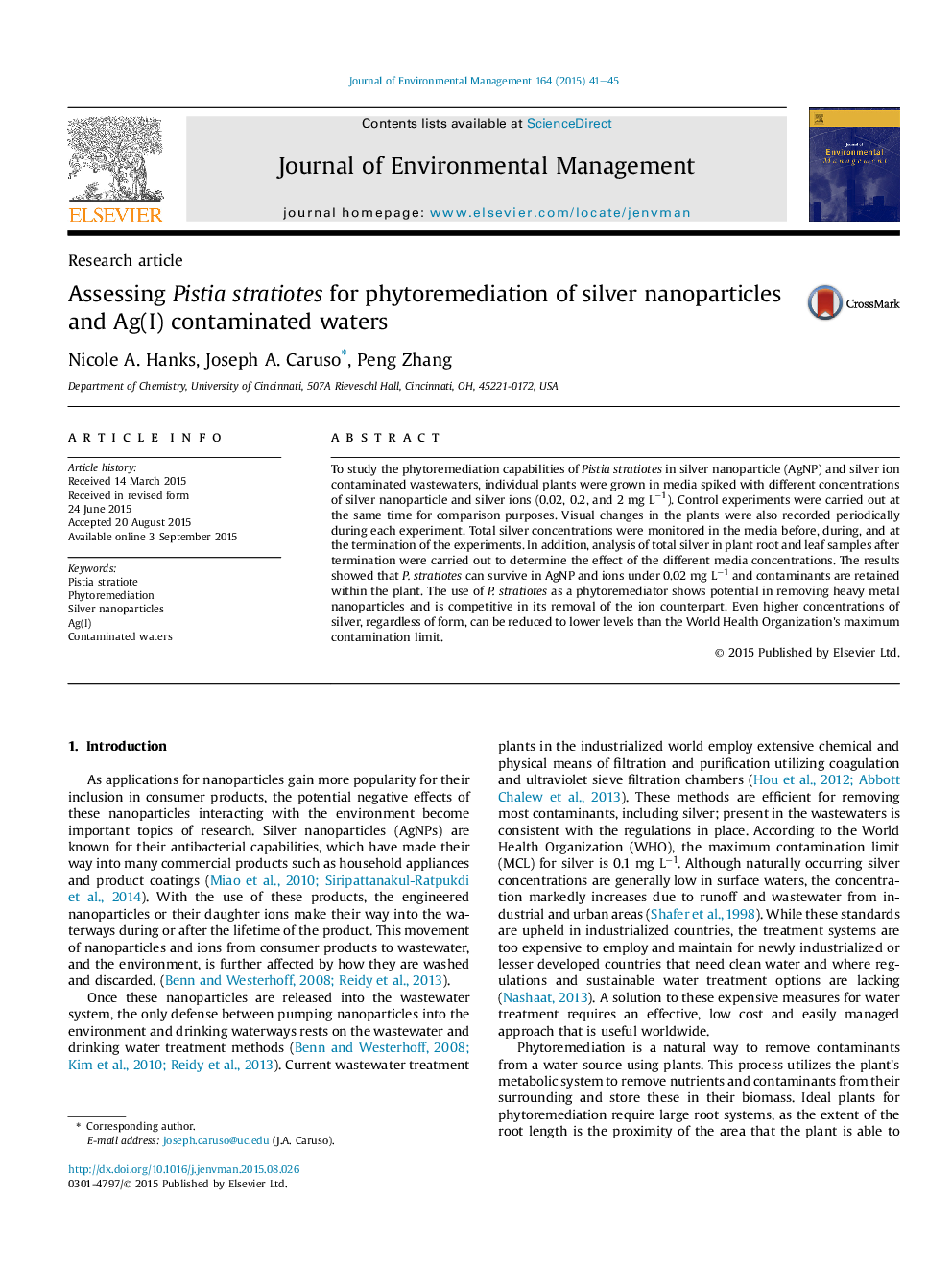| Article ID | Journal | Published Year | Pages | File Type |
|---|---|---|---|---|
| 1055404 | Journal of Environmental Management | 2015 | 5 Pages |
•Pistia stratiotes interactions with AgNPs and silver ions are examined.•Growth media solutions are monitored for plant health and contaminant location.•Higher concentrations of various silver forms are reduced to lower levels in media.•Silver species are partially retained in the plant over the trial period.•Phytoremediation may be compromised because of silver toxicity.
To study the phytoremediation capabilities of Pistia stratiotes in silver nanoparticle (AgNP) and silver ion contaminated wastewaters, individual plants were grown in media spiked with different concentrations of silver nanoparticle and silver ions (0.02, 0.2, and 2 mg L−1). Control experiments were carried out at the same time for comparison purposes. Visual changes in the plants were also recorded periodically during each experiment. Total silver concentrations were monitored in the media before, during, and at the termination of the experiments. In addition, analysis of total silver in plant root and leaf samples after termination were carried out to determine the effect of the different media concentrations. The results showed that P. stratiotes can survive in AgNP and ions under 0.02 mg L−1 and contaminants are retained within the plant. The use of P. stratiotes as a phytoremediator shows potential in removing heavy metal nanoparticles and is competitive in its removal of the ion counterpart. Even higher concentrations of silver, regardless of form, can be reduced to lower levels than the World Health Organization's maximum contamination limit.
